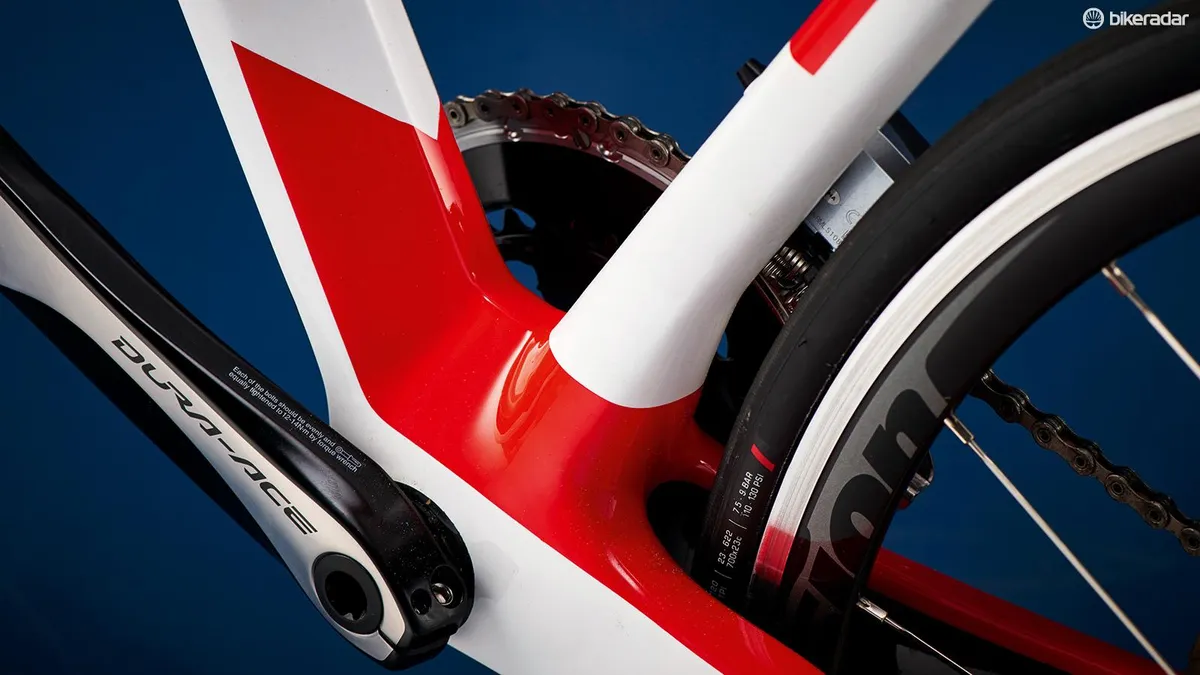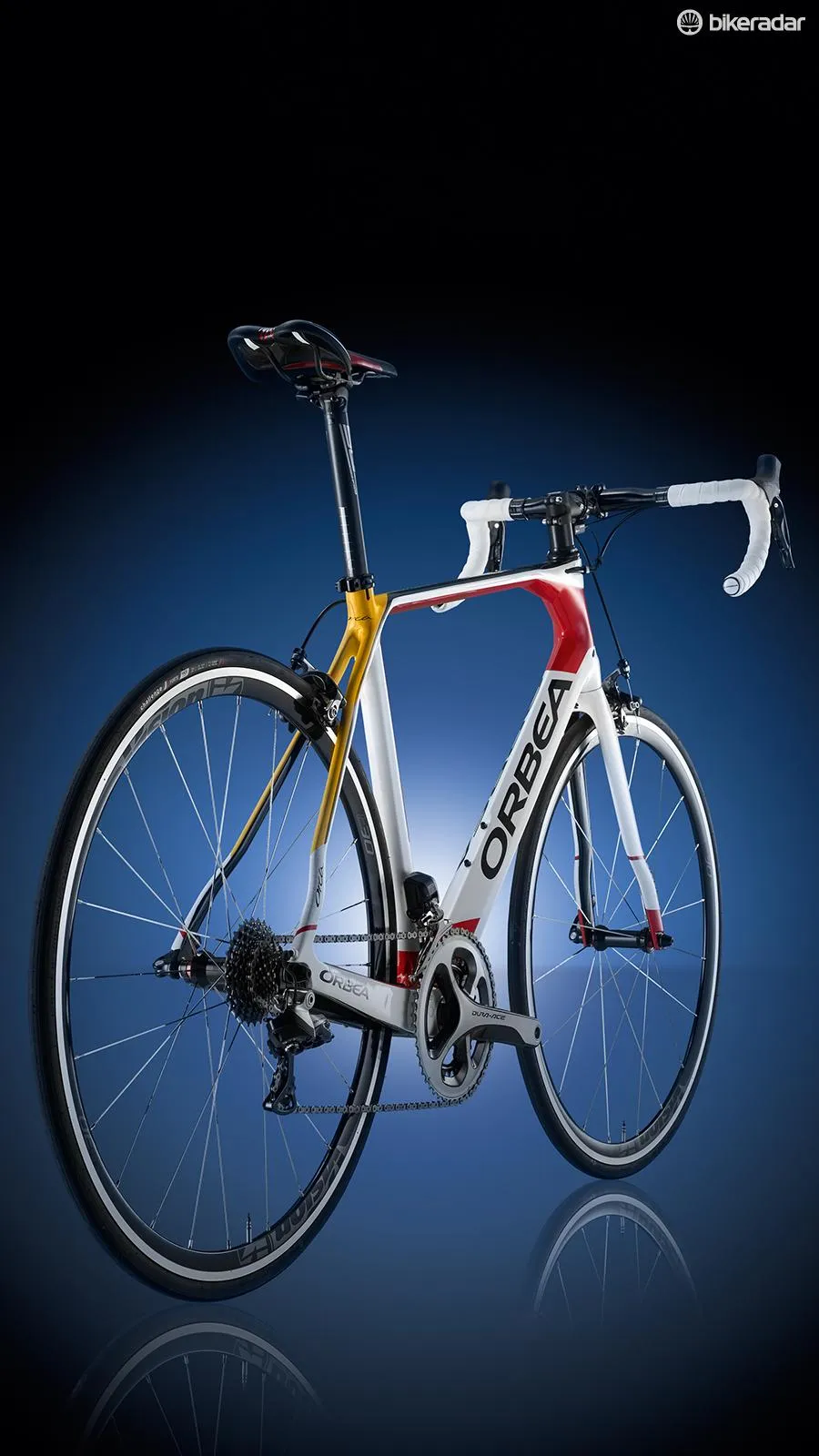Orbea’s association with the pro ranks went on hiatus with the collapse of the bright Basque orange of Euskaltel. It’s returned with the French Cofidis team that includes 2014 Giro d’Italia Points jersey winner Nacer Bouhanni, who sadly exited this year's TdF during Stage 5 following a crash that included five of the Cofidis outfit.
- Highs: Precision handling from a magnificent chassis
- Lows: Average wheels don’t belong on such a classy frameset
- Buy if: You want a pro-level bike with an amazing frame and fantastic drivetrain – and you already have a set of quality wheels
The new Orca is a departure from the previous model. The older one had a swathe of curvy sculpted lines with beautifully machined and fluted alloy inserts; the new Orca looks positively understated, with the emphasis on slender and angular through the flattened top tube, triangulated head tube junction and thin seatstays that broaden at the dropouts.

The Orca’s beefy bottom bracket shell flares out to huge squared off chainstays
The new fork is aero-bladed and offers a minimal frontal area. The only part of the frame that looks as powerful and purposeful as the old bike are the hugely deep, squared off chainstays.
Hop aboard and it feels every bit a stiff as its predecessor, yet more lithe, light and flickable. The new chassis is more than 20 percent lighter, with the frame close to 900g and the fork around 300g. That’s a saving of over 250g over the old bike on the frame alone.
On the road the front end feels solid with the handling impressively direct, but the slender seatstays and skinny 27.2mm carbon post make the bike’s rear end seem fluid and smooth. The geometry is suitably Grand Tour stuff – with a low front end, mid-length (1008mm) wheelbase and sharp (73/73.2-degree) angles it balances stability and quick responses with precision.
The lightness of the chassis is offset by the specification of the Replica. Shimano Dura-Ace Di2 with an amateur friendly 50/34, 11-28 pairing is about as good as it gets with regards to drivetrain performance, but Orbea has cut a few corners elsewhere.

The carbon seatpost may be a slim 27.2mm in diameter but it still has room for the Di2 battery
The bar and stem combination is a modest FSA Energy all-alloy pairing, and we like FSA’s familiar compact drop of the bar. An SL-K carbon seatpost, designed to take the Di2 battery, is topped with Selle Italia’s excellent SLR saddle.
The biggest spec savings are with the wheels, Vision’s T30 alloy 30mm deep pair. The hubs are smooth with excellent pick-up from the freehub and are matched to classy-looking bladed aero spokes. Braking performance from the machine finished brake track is very positive, and the 1570g weight a pair isn’t bad.
The downside is the rim width – with 18mm external it makes them pretty narrow for a tyre. The Challenge Forte 23s are very good with grippy tread matched to a supple casing, but housed on this rim they feel too tall and narrow so too much road noise gets through at the front, which is compounded by the bar.
We switched in a set of higher spec, wider and lighter hoops and the Orca went from being a great bike to a truly exceptional one. We applaud Orbea for making a true team replica with Dura-Ace Di2 available for this sort of outlay though – it’s a value for money statement that puts plenty of the opposition to shame.



